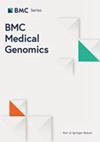Whole exome sequencing analysis of 167 men with primary infertility
IF 2.1
4区 医学
Q3 GENETICS & HEREDITY
引用次数: 0
Abstract
Spermatogenic failure is one of the leading causes of male infertility and its genetic etiology has not yet been fully understood. The study screened a cohort of patients (n = 167) with primary male infertility in contrast to 210 normally fertile men using whole exome sequencing (WES). The expression analysis of the candidate genes based on public single cell sequencing data was performed using the R language Seurat package. No pathogenic copy number variations (CNVs) related to male infertility were identified using the the GATK-gCNV tool. Accordingly, variants of 17 known causative (five X-linked and twelve autosomal) genes, including ACTRT1, ADAD2, AR, BCORL1, CFAP47, CFAP54, DNAH17, DNAH6, DNAH7, DNAH8, DNAH9, FSIP2, MSH4, SLC9C1, TDRD9, TTC21A, and WNK3, were identified in 23 patients. Variants of 12 candidate (seven X-linked and five autosomal) genes were identified, among which CHTF18, DDB1, DNAH12, FANCB, GALNT3, OPHN1, SCML2, UPF3A, and ZMYM3 had altered fertility and semen characteristics in previously described knockout mouse models, whereas MAGEC1,RBMXL3, and ZNF185 were recurrently detected in patients with male factor infertility. The human testis single cell-sequencing database reveals that CHTF18, DDB1 and MAGEC1 are preferentially expressed in spermatogonial stem cells. DNAH12 and GALNT3 are found primarily in spermatocytes and early spermatids. UPF3A is present at a high level throughout spermatogenesis except in elongating spermatids. The testicular expression profiles of these candidate genes underlie their potential roles in spermatogenesis and the pathogenesis of male infertility. WES is an effective tool in the genetic diagnosis of primary male infertility. Our findings provide useful information on precise treatment, genetic counseling, and birth defect prevention for male factor infertility.对 167 名男性原发性不孕症患者进行全外显子组测序分析
生精功能障碍是导致男性不育的主要原因之一,但其遗传学病因尚未完全明了。该研究利用全外显子组测序(WES)筛选了一组原发性男性不育患者(n = 167),与 210 名正常生育能力的男性进行对比。根据公开的单细胞测序数据,使用 R 语言 Seurat 软件包对候选基因进行了表达分析。使用 GATK-gCNV 工具没有发现与男性不育有关的致病拷贝数变异(CNV)。因此,在 23 名患者中发现了 17 个已知致病基因(5 个 X 连锁基因和 12 个常染色体基因)的变异,包括 ACTRT1、ADAD2、AR、BCORL1、CFAP47、CFAP54、DNAH17、DNAH6、DNAH7、DNAH8、DNAH9、FSIP2、MSH4、SLC9C1、TDRD9、TTC21A 和 WNK3。发现了12个候选基因(7个X连锁基因和5个常染色体基因)的变异,其中CHTF18、DDB1、DNAH12、FANCB、GALNT3、OPHN1、SCML2、UPF3A和ZMYM3在先前描述的基因敲除小鼠模型中改变了生育能力和精液特征,而MAGEC1、RBMXL3和ZNF185则在男性因素不育患者中反复检测到。人类睾丸单细胞测序数据库显示,CHTF18、DDB1 和 MAGEC1 优先在精原干细胞中表达。DNAH12和GALNT3主要存在于精母细胞和早期精子细胞中。UPF3A 在整个精子发生过程中都有较高水平的表达,但在伸长精子中除外。这些候选基因的睾丸表达谱说明了它们在精子发生和男性不育发病机制中的潜在作用。WES 是原发性男性不育基因诊断的有效工具。我们的研究结果为男性因素不育症的精确治疗、遗传咨询和出生缺陷预防提供了有用的信息。
本文章由计算机程序翻译,如有差异,请以英文原文为准。
求助全文
约1分钟内获得全文
求助全文
来源期刊

BMC Medical Genomics
医学-遗传学
CiteScore
3.90
自引率
0.00%
发文量
243
审稿时长
3.5 months
期刊介绍:
BMC Medical Genomics is an open access journal publishing original peer-reviewed research articles in all aspects of functional genomics, genome structure, genome-scale population genetics, epigenomics, proteomics, systems analysis, and pharmacogenomics in relation to human health and disease.
 求助内容:
求助内容: 应助结果提醒方式:
应助结果提醒方式:


